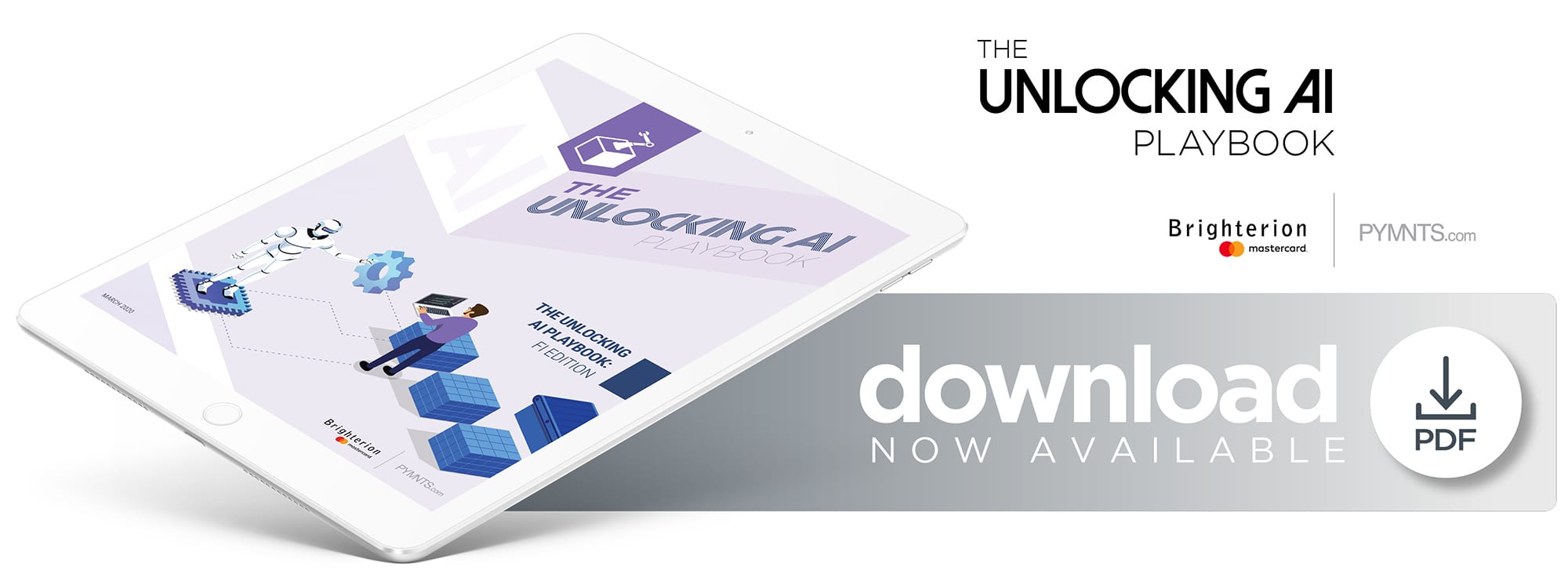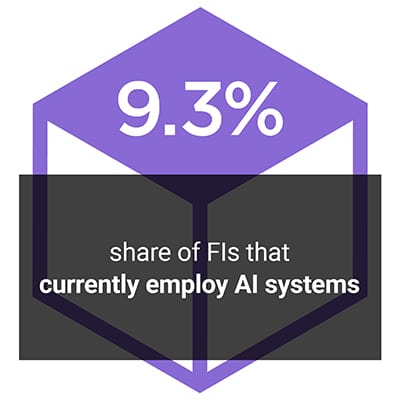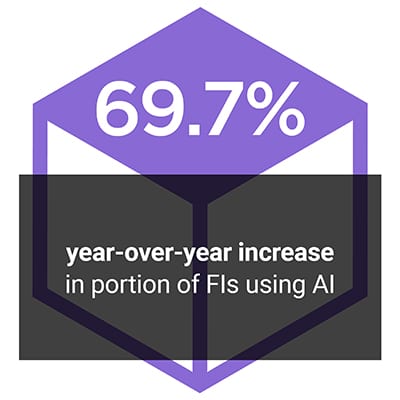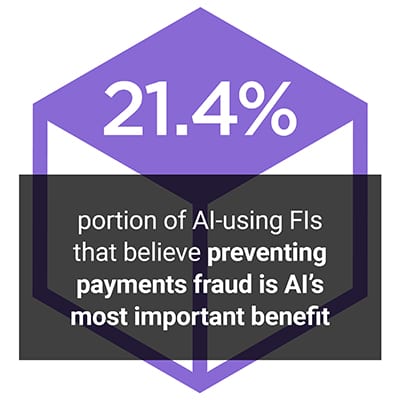 There is scarcely a financial institution (FI) that does not claim to be using artificial intelligence (AI) in some capacity or other. Yet, these claims do not always rest on a solid foundation. What some banks purport to be AI is often lumped together with other less sophisticated computational systems or, in some cases, not AI at all but the result of intensive human labor.
There is scarcely a financial institution (FI) that does not claim to be using artificial intelligence (AI) in some capacity or other. Yet, these claims do not always rest on a solid foundation. What some banks purport to be AI is often lumped together with other less sophisticated computational systems or, in some cases, not AI at all but the result of intensive human labor.
 PYMNTS’ latest research seeks to distinguish the real from the hype when it comes to genuine AI adoption in the financial sector. Our findings are at once sobering and encouraging: Just 10 percent of FIs report using AI that meets our specific and narrow definition. This represents a 69.7 percent increase from our previous study conducted in 2018, the AI Innovation Playbook, which showed a usage rate of just 5.5 percent. Even more significantly, our research shows that FIs are using AI with greater focus than they have in the past, with two areas emerging as key applications: payments fraud and credit risk.
PYMNTS’ latest research seeks to distinguish the real from the hype when it comes to genuine AI adoption in the financial sector. Our findings are at once sobering and encouraging: Just 10 percent of FIs report using AI that meets our specific and narrow definition. This represents a 69.7 percent increase from our previous study conducted in 2018, the AI Innovation Playbook, which showed a usage rate of just 5.5 percent. Even more significantly, our research shows that FIs are using AI with greater focus than they have in the past, with two areas emerging as key applications: payments fraud and credit risk.
These are among the high-level findings of the Unlocking AI Playbook: FI Edition, a PYMNTS and Brighterion collaboration, based on a survey of 150 U.S. bank executives at institutions ranging from $1 billion in assets to more than $100 billion. The goal of this series is to assess how banks and other sectors are using AI and other computational systems to manage critical business functions, including payments, regulatory compliance, credit risk and financial fraud.
 Our study identifies six main computational systems in use by FIs today, including AI. The most prevalent systems by far are business rules management (BRMS), which is employed by 82 percent of banks, and data mining, used by 79.3 percent of them. Both of these systems are “supervised,” meaning they require human input and interpretation. In contrast, 9.3 percent of FIs report using genuine AI, which by our definition must be capable of self-learning and adapting to new information in real time. However, AI has made far more dramatic strides among larger FIs: 87.5 percent of banks with assets over $100 billion report using AI, as do 42.9 percent of FIs with assets between $25 billion and $100 billion.
Our study identifies six main computational systems in use by FIs today, including AI. The most prevalent systems by far are business rules management (BRMS), which is employed by 82 percent of banks, and data mining, used by 79.3 percent of them. Both of these systems are “supervised,” meaning they require human input and interpretation. In contrast, 9.3 percent of FIs report using genuine AI, which by our definition must be capable of self-learning and adapting to new information in real time. However, AI has made far more dramatic strides among larger FIs: 87.5 percent of banks with assets over $100 billion report using AI, as do 42.9 percent of FIs with assets between $25 billion and $100 billion.
Another key development is the increasing use of AI to combat payments fraud and improve credit risk assessment, which are uniquely suited to AI’s strengths. Supervised systems like BRMS are simply not capable of responding to the dynamic, constantly shifting nature of these risks. For example, 21.4 percent of FIs that use AI consider reducing payments fraud its most important benefit. Not a single institution cited this as its most important benefit in our 2018 study.
 Our research reveals another notable trend: FIs’ strong interest in a specific form of AI in which “smart agents” can be assigned to multiple entities within a system and offer personalized insights and responses. For example, an FI with 100 million cards issued could have 100 million smart agents analyzing and learning behaviors associated with each user. More than a quarter of FIs would be “very” or “extremely” interested in implementing smart agent-based AI, and larger institutions are especially interested. For example, more than 70 percent of FIs with assets over $25 billion would be highly interested in adopting smart agent-based AI.
Our research reveals another notable trend: FIs’ strong interest in a specific form of AI in which “smart agents” can be assigned to multiple entities within a system and offer personalized insights and responses. For example, an FI with 100 million cards issued could have 100 million smart agents analyzing and learning behaviors associated with each user. More than a quarter of FIs would be “very” or “extremely” interested in implementing smart agent-based AI, and larger institutions are especially interested. For example, more than 70 percent of FIs with assets over $25 billion would be highly interested in adopting smart agent-based AI.
To learn more about the rising promise of AI in the banking sector, as well as the obstacles it faces, download the report.
About The Playbook:
The Unlocking AI Playbook: FI Edition, powered by Brighterion, seeks to provide a clear and accurate picture of how banks are using artificial intelligence in their operations and their future plans in this area. It also examines how other computational systems are being used to manage payments, regulatory compliance, financial fraud and other important business functions.